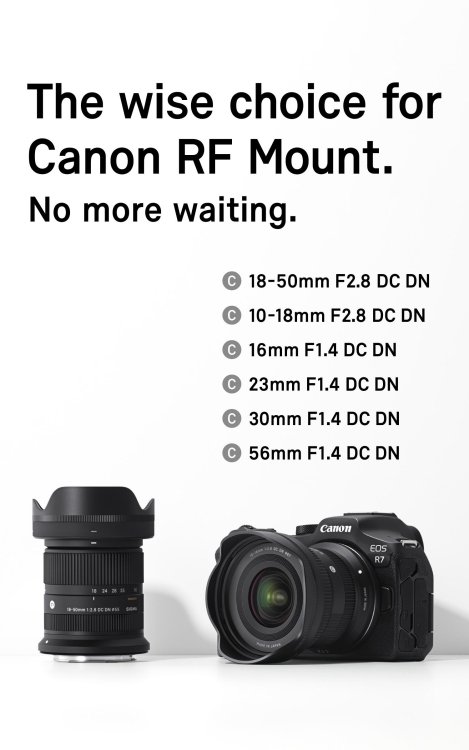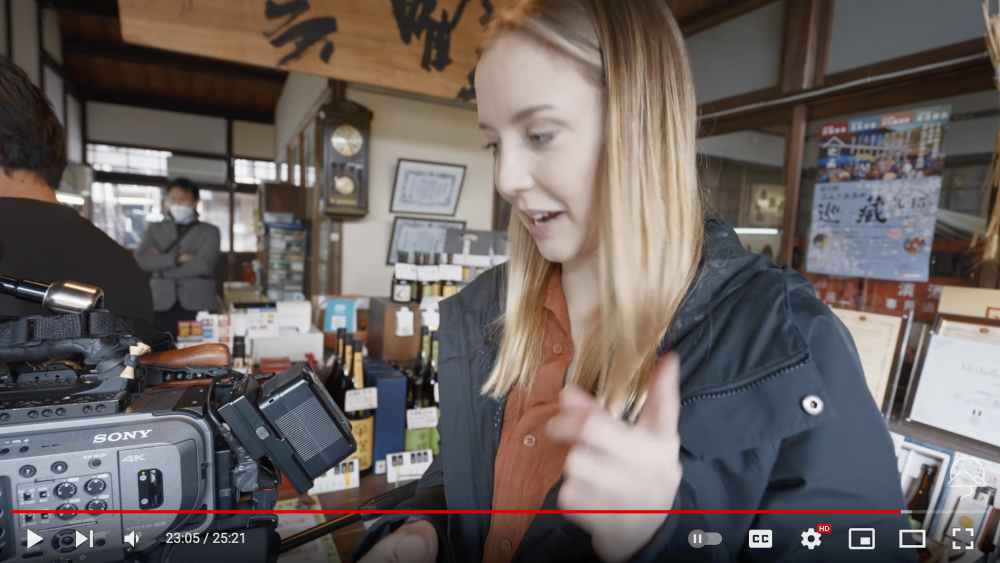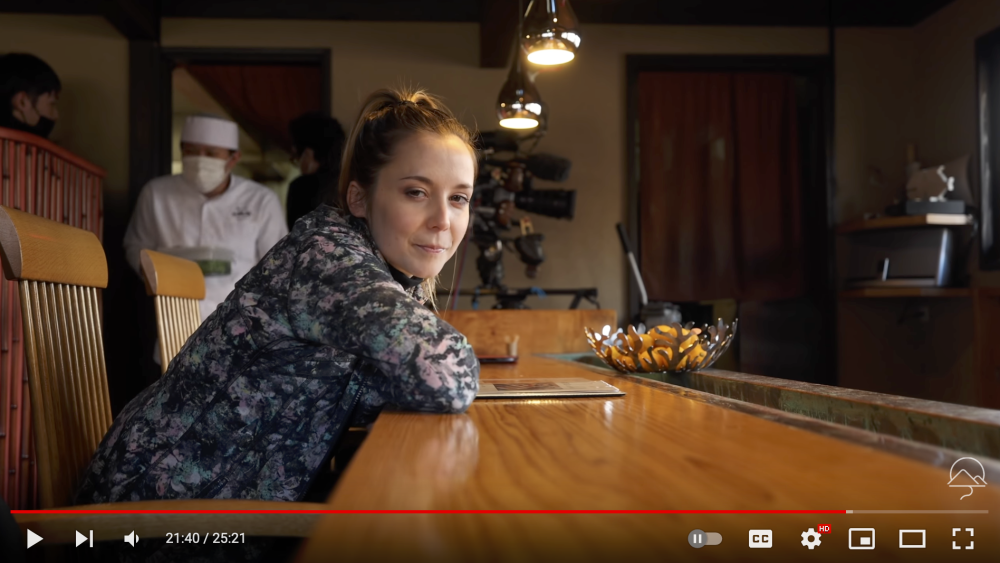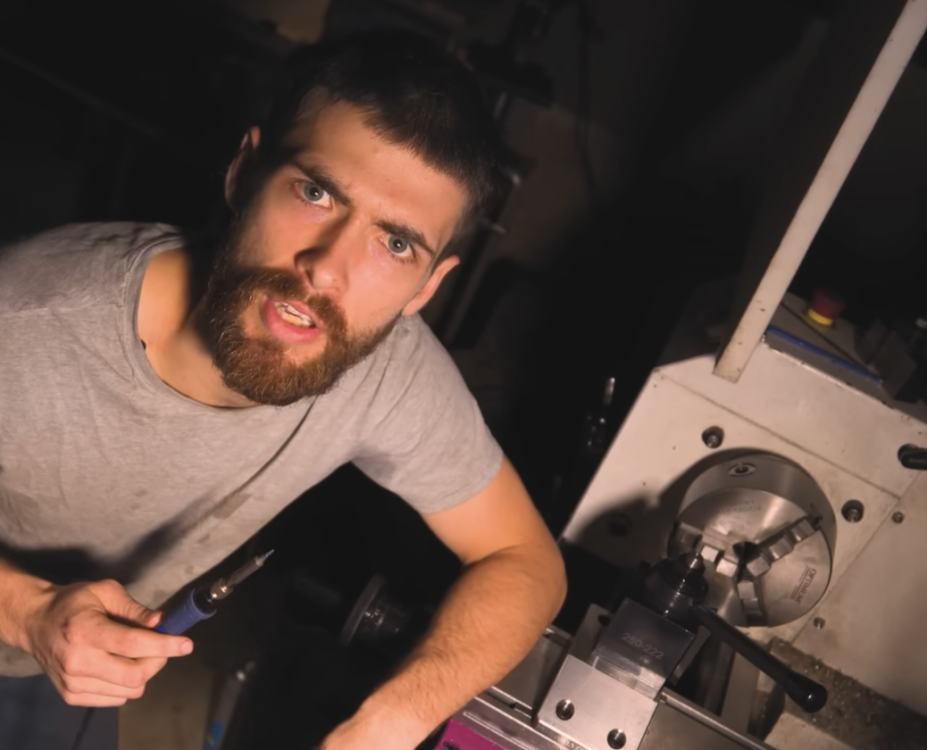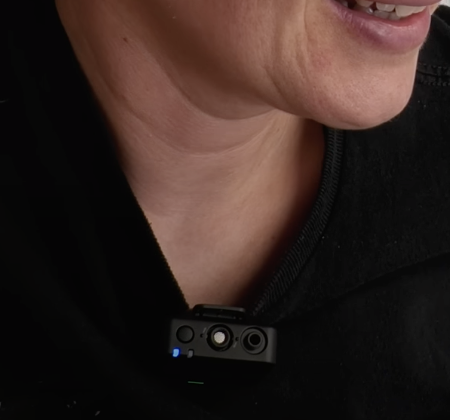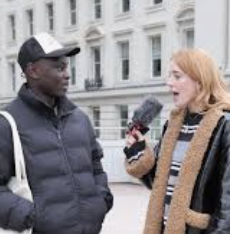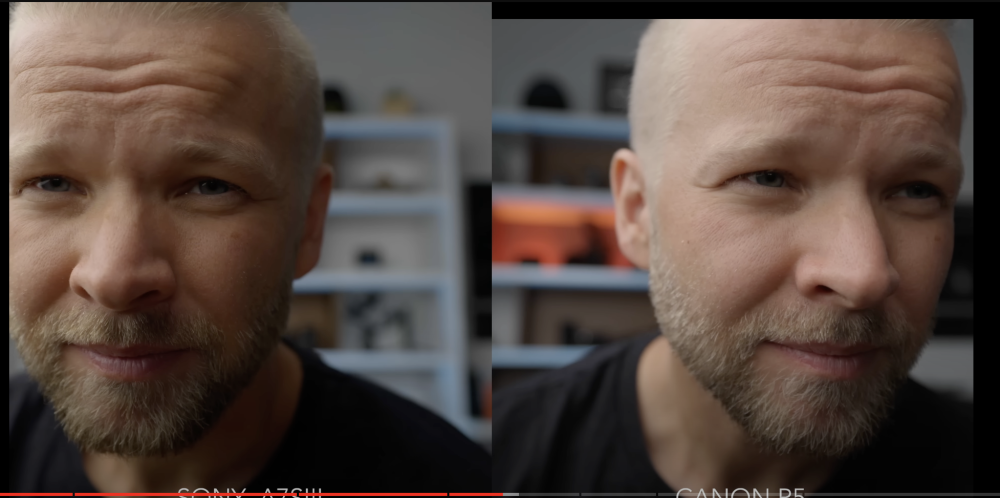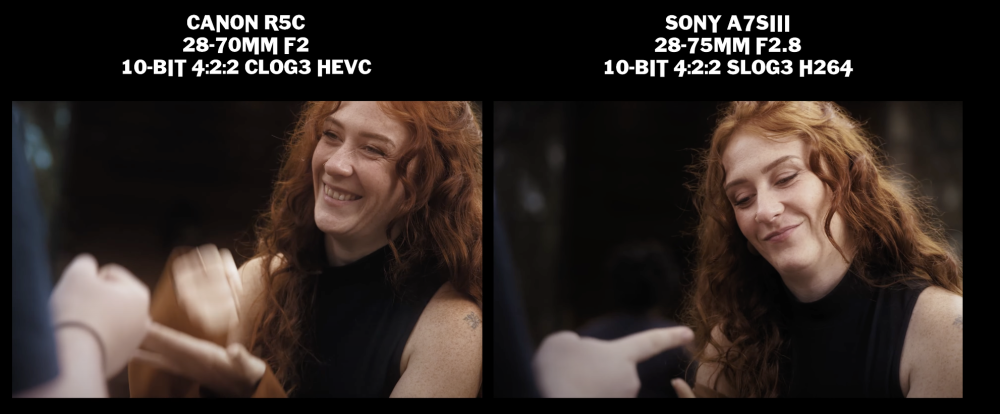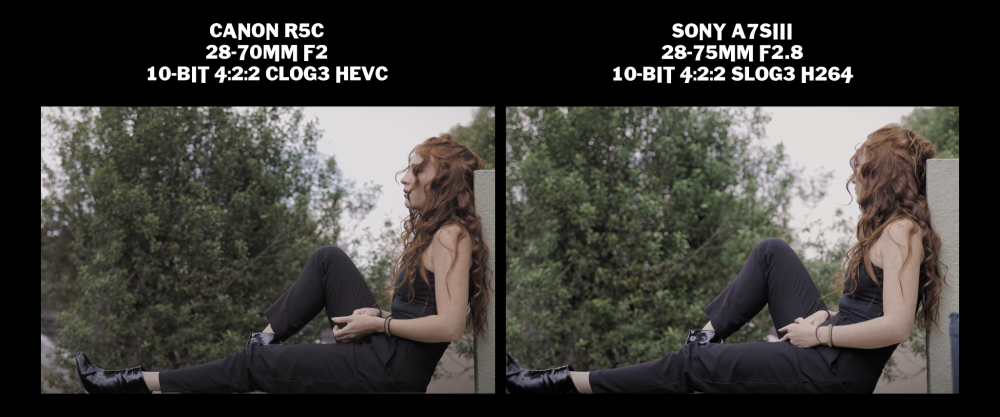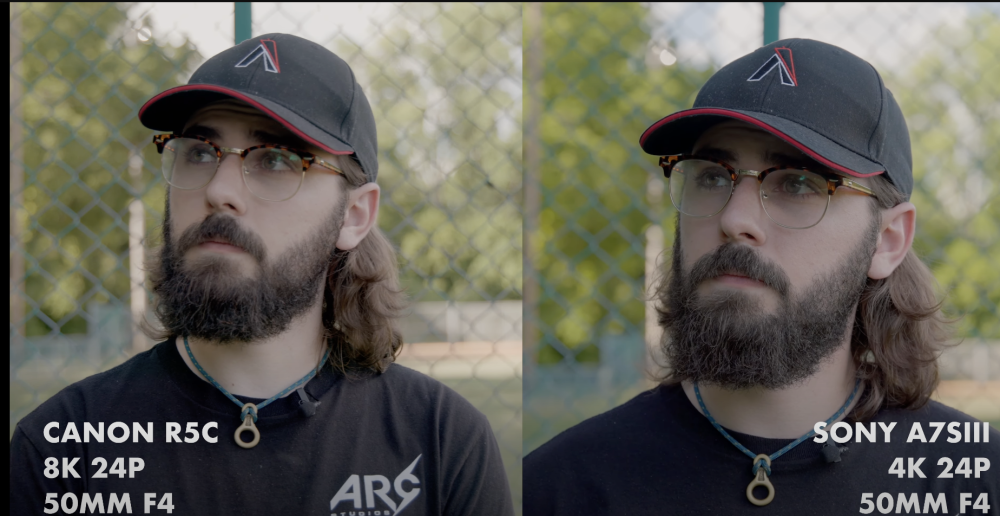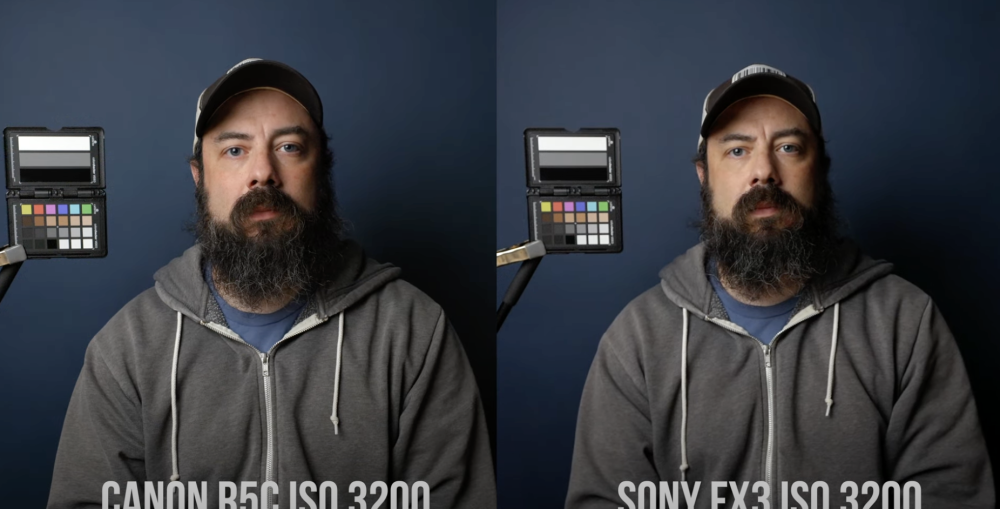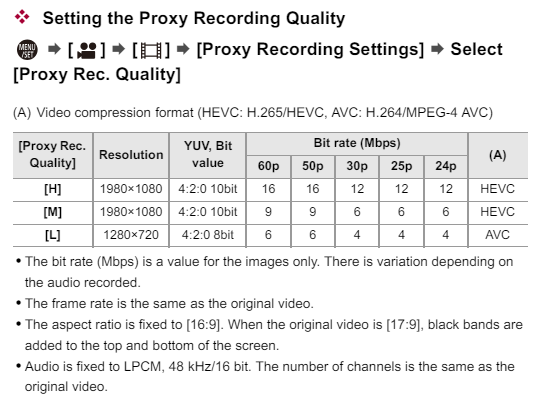All Activity
- Past hour
-
 ac6000cw reacted to a post in a topic:
Sigma Announce RF Mount Lenses
ac6000cw reacted to a post in a topic:
Sigma Announce RF Mount Lenses
-
I agree (having owned 10 of their hybrid cameras and 2 camcorders in the last 15 years). Panasonic has a long heritage in professional video (going back over 60 years) and it shows. I think the GH5 became a very popular camera for video because it was a good all-round, reliable, video tool in most situations, rather than excelling in any particular area at the expense of others or having a specific SOOC 'look'. For a bit of fun, this is 9 year old, basically SOOC, FHD 50p video from a Panasonic LX7 'enthusiast compact' with a small 10MP 1/1.7" sensor. There's some obvious aliasing/jaggies and I think the reds/oranges in particular are exaggerated. But for a camera launched in 2012 that fitted in the palm of one hand and weighed 270g I think it is reasonably decent (and could be improved in post). SOOC video from a G6, GX85 or G80 would leave it in the dust though, having much less aliasing and better balanced colours.
- Today
-
Sigma have announced that they are releasing a range of RF mount lenses, indicating that Canon have softened their “no 3rd party lenses” stance. I say softened rather than abandoned as, whilst these lenses are fully licensed by them, they do not include any full frame lenses. At least for now. The initial offerings are the two f2.8 zooms and four f1.4 primes from Sigma’s Contemporary range that have been available in other mounts for a few years now. The 18-50mm is the first one that will be available but it is not until July and the others will follow in the Autumn. No word on prices but they are usually similar in different mounts so you can take that as a rough guide, although maybe there will be an additional cost on top for the official licensing from Canon. Good news for owners of crop RF cameras to have different options and also for people using the KOMODO (or maybe we should call it the NIKOMODO now). Full details here https://www.sigma-global.com/en/contents/sigma_rfmount_lenses/
-
 Emanuel reacted to a post in a topic:
Shure MoveMic
Emanuel reacted to a post in a topic:
Shure MoveMic
-
 mercer reacted to a post in a topic:
Color - SOOC vs. LUTs/Grading
mercer reacted to a post in a topic:
Color - SOOC vs. LUTs/Grading
-
My expertise is very far from masterclass.. if you think it is that level then it just shows how little you understand about the subject. If you were being sarcastic then that's just not very nice, and really just makes a comment about how badly you handle criticism. If you weren't being sarcastic, then you obviously have some sort of belief about cameras and colour science that is holding you back from hearing what everyone seems to be telling you. You obviously took my comments personally, which of course you're free to do, but this isn't a discussion about how we can all make each other feel loved and supported - this is a discussion about something tangible and there are concepts to understand, so if you aren't understanding them then pointing that out is a kindness, because it provides you the opportunity to re-evaluate and try and listen to peoples comments in a new way. The concept you're not understanding is that no-one who cares about colour grading enough to talk about it online but wouldn't be willing to change camera settings, upload LUTs, or do basic adjustments in post. Even the "Buy my LUT" YT camera bros will tell you that you need to grade underneath it, at least making minor changes to the contrast, WB, exposure, saturation, and the like. The people that are willing to talk about colour grading online but aren't willing to actually do anything about it aren't interested in colour science, they're interested in trolling or are lonely or are attached to a fantasy they can buy great results or some other motivation. The people who want good colour are willing to at least lift a finger - in post to change a setting here or there - to get better results. The differences in these side-by-side comparisons you're making is, in many instances, a single adjustment in camera or in post, taking literally a few seconds... far less time than you've invested in arguing against practically any sensible advice given in this or the many other threads you've started.
-
 SRV1981 reacted to a post in a topic:
Color - SOOC vs. LUTs/Grading
SRV1981 reacted to a post in a topic:
Color - SOOC vs. LUTs/Grading
-
Post. I trust my calibrated monitor in a controlled room better than the one on set. So what I do with any new camera is I do a bunch of tests to find a setting that I like, then I shoot everything in that setting and adjust in post as needed. That way I am very familiar with what I can or can't do with that setting. I will often do tests to create specific color node graphs ahead of time, designed to be applied in post. But on the shoot I want everything to be familiar, even when I know based on my tests what it will transform into. That's not to say I'm good at cinematography. But I do think I'm good at not wasting people's time. I test everything ahead of time by myself or with the people leading the project, then we maximize set time for the actors and crew. No fiddling with settings while people are waiting around.
-
That’s a better way of saying it. Do you remove it internally or in post production? I think you don’t get it or feel the original query is beneath your masterclass expertise - no need to comment. Ever.
-
 SRV1981 reacted to a post in a topic:
Color - SOOC vs. LUTs/Grading
SRV1981 reacted to a post in a topic:
Color - SOOC vs. LUTs/Grading
-
You're still not getting it. If you were going to shoot SOOC, you would adjust the camera settings to dial in the look you like. You'd be colour grading in-camera rather than in post. It's well known that Panasonic users will adjust the Hue in the camera in order to shift the skin tones to where they want so SOOC looks to their tastes. The GH5 (and many other cameras I'd imagine) have manual temp and tint controls so you can dial in whatever WB you want manually. Also, if you were going to put a LUT into the camera, you'd dial it in first, making it how you wanted. I seriously don't think that there is anyone that is interested in good colour that isn't willing to do at least something to get it - not willing to audition and customise the profile in-camera AND not willing to even do light edits in post but yet still wanting good colour enough to change camera systems entirely is just silly. It's like saying you want to make the best adventure films possible but you're not willing to leave your house. Most cameras have too much DR to look good SOOC because the profiles won't look contrasty enough, so a lower DR camera is your best bet. The GX85 is pretty good in this regard. As well as for other aspects of the film-making process that shall remain nameless and unacknowledged. Panasonic actually has really nice colour - it's just not cool to say it out loud on the forums but I hear it from people in private quite often. Here's a post with a bunch of GX85 images that are all SOOC: https://www.eoshd.com/comments/topic/74148-making-the-most-of-the-iphone-gx85-and-gh5-and-shooting-in-the-real-world/?do=findComment&comment=569842 No. No-one "keeps" the green in the Alexa image. Anyone shooting with an Alexa will be colour grading it. Anyone who shoots on Alexa and ends up with a green tinted image WANTED that look, and CREATED that look specifically. It didn't stay there by default due to the lack of anyone doing any colour grading. That green look that I showed in feature films is actually not very easy to get - just because you don't like it doesn't mean it's not desirable and nuanced. Think about this some more... You saw that side-by-side with the Alexa and P4K. What did that show you? Even in very high DR situations, the P4K is a simple matrix transformation away from looking like an Alexa. But, P4K footage from all these influencers and low-budget film-makers doesn't look like Alexa footage - not even slightly! Why? Because the look of TV and movies isn't created by the camera - it's created by the lighting, production design, and colour grading! Student films don't instantly look like movies when they buy an FX3. Some years ago a YouTuber I follow hosted a TV show and vlogged the BTS and got a few production images to share. There was one that was side-by-side. This is the image from her A7S3 - a very capable camera - with a pretty standard colour grade: This is an unused production shot from the Sony cinema camera right next to her... Here's the thing... These cameras have almost everything in common and yet the image is so different. Hannah isn't a colourist but isn't a noob either - her videos will be colour graded to a reasonable extent and she regularly makes beautifully looking images and sequences in her travels around Japan. So what's left? Everything except the camera.... So no, if even a tourism travel TV show can colour grade their images so far from where they started, then no Alexa footage ends up green by "keeping" the green in.
-
I wonder who these mics are actually for? I mean, influencers have gone away from hidden microphones in order to look authentic: and even people taking the piss out of them... The pros are going to actually mic people up properly. So, who is left? Is there some hidden niche of people who care about speed and also hiding the mic? My experience of the people that are just using the little matchbox sized mics is that they aren't trying to hide them either: Even the street-interview people aren't hiding them:
-
What I like about recent Canon C line is that the skin often has a bit more separation from other colors. I don't know that I prefer red/magenta, but it's not nice if skin gets muddled with everything else. I wouldn't say all Canon, because I was honestly never a fan of the C100's image for the few shoots I used it on. I don't know that I especially like color on the Panasonic S-series as SOOC it tends to exaggerate yellows. It's a great camera and does what I need at an unbeatable price though.
-
I’ll have to find the examples I’ve seen where even with the same LUT, say Phantom - the cameras produce different images. You could probably edit in post to get them nearly identical unless you a/b but the question, for me is what can take the least time. I’m realizing Canon and Lumix are my answers for this discussion. Will check this too! Thanks 1000% this. If I could get this image in a smaller body I’d do it in a heartbeat. Above my pay grade but I’d say some creators still keep some of that green in and I dislike it compared to movies or shows that accentuate pinks and magentas. Just my preference for watching cinema and producing
-
 SRV1981 reacted to a post in a topic:
Color - SOOC vs. LUTs/Grading
SRV1981 reacted to a post in a topic:
Color - SOOC vs. LUTs/Grading
-
HA! I guess that goes to show that their target customers aren't the colourists then!!
-
 kye reacted to a post in a topic:
Shooting a short
kye reacted to a post in a topic:
Shooting a short
-
I also have that. It was great and really well designed in terms of how the controller mapped to the functions and the workflow etc. It was fiddly though, that's for sure. The only limitation I found with it was that it couldn't do what I described above with pushing two adjustments against each other. Of course if you don't work that way, then it wouldn't matter. Comparing the number of controls it offered vs the dedicated BM panels was just insane - I really think that BM could make a killing changing their whole approach to the panels. Imagine if they made a more generic panel that had "pages" and could be switched between them. Let's imagine the entry-level one costs $1000 and can get to half-a-dozen pages. The amateur buys one panel, and switches between the pages, and life is good. The pro wants dedicated controls for everything without switching, so buys multiple panels and sets each one to a different page. The pro also buys the "pro" panel that costs $2000 and can access the other restricted panels. Later on the pro buys more pro panels. In the end the pro has spent as much as they would have buying the Advanced panel, so there's no loss of income for BM, and the pro gets a customisable surface where the controls go where they want. This can be configured in 2 minutes in shared spaces like colouring rooms. Of course. Interesting to learn you figured it out though. The only place online I could find anything on it their attempt failed. Maybe it failed due to fear of legal action rather than technical impenetrability, but interesting nonetheless.
-
Great camera. It's cinema in a box the size of a pack of cigarettes. There's nothing wrong with video - technically it's what I do. One thing that is starting to be understood is the look of the footage, which with video often looks quite artificial, which is in contrast to film which looks quite organic. Artificial isn't a bad thing either - all styles are valid. My own preferences are for something that is aesthetically pleasing, mildly flattering, and doesn't call attention to itself. This has pushed me into investigating the whole subject and what "cinematic" actually means, which leads into the territory of YouTubers making cinematic videos that despite having huge amounts of effort and thousands of dollars of equipment are some of the least cinematic videos ever made, even when compared to something like a T2i. ...and you can install your own. Bingo! Instantly, you can have whatever look you want, SOOC. This is what I do. My current best answer is GX85, 14-140mm zoom, 12-35mm zoom, and 12-32mm zoom. If I'm not allowed to colour grade it, I'll edit it on a 720p timeline and export upscaling that timeline to 4K. That will knock the digital edge off it. Why? Because if your camera is large then you'll get beautiful images with lovely colour science and everyone in the background of those images will be staring at the camera. Oh darn it! There I go again, talking about something other than colour. It's like I'll never learn that there's no more to film-making than camera tests. C300mk2. Why? Go watch any video on why this is the most popular documentary camera. Rent an Alexa. If you want to understand why, go watch any video from a professional cinematographer or colourist talking about why Alexa is the best choice. Neither do I. Which is sort of the point I've been making all along. Alexas are known to be green, sometimes even problematically so. Canons are magenta. etc etc. If we're talking about choosing cameras for the best SOOC colour, and yet bizarrely there isn't any limitation on the fact that some cameras require 3 people to operate them, then I'm thinking that if you can put a LUT in the camera then it counts as being SOOC colour. Ironically, because it comes SOOC lol. In which case, you can choose Alexa 65 and just put a modified 250D / 2383 LUT in there and you're done! Alexas also tend to go green. There's a knob in any NLE that corrects this, but don't let 3s of work in post stop you from changing your entire set design around that one tiny little thing!
- Yesterday
-
 kye reacted to a post in a topic:
Color - SOOC vs. LUTs/Grading
kye reacted to a post in a topic:
Color - SOOC vs. LUTs/Grading
-
 Ty Harper reacted to a post in a topic:
OPEN AI VIDEO TECH ONE YEAR LATER...
Ty Harper reacted to a post in a topic:
OPEN AI VIDEO TECH ONE YEAR LATER...
-
Do you think you prefer the red/magenta bias of images ? I ask because canon and Panasonic seem to have that
-
 SRV1981 reacted to a post in a topic:
Color - SOOC vs. LUTs/Grading
SRV1981 reacted to a post in a topic:
Color - SOOC vs. LUTs/Grading
-
Right, but they are not the same as shooting log and then using Resolve color management as a 1-step modification. On my S5, shooting Vlog and then using color management > shooting standard profile. Or, if you mean a baked in user-specified LUT, that adds another dimension again. I know, I meant for the discussion. Otherwise... Alexa 35 is always the answer 🙂 These are hard questions because almost no test footage on the internet is SOOC, I haven't used every camera, and also of course there are many different film stocks so it really depends what you consider a film look. I'll also assume price new so the C70 is >$4k etc. But given my limited knowledge, and if the only consideration is color with zero post manipulation, for a generic project, my only answer is the Samsung NX1. Absolutely blows everything else I've used out of the water! However, I would never use NX as its a dead system with no active EF adapters. And there is no log profile. So my personal choice in that scenario would probably be a Panasonic S5IIx. But a good portion of my reasoning is based on Vlog, its pixel shift photo mode, and no strange crop factors and other limitations like some others. So not strictly color. This introduces another caveat in addition to the ones above, which is that color is the last consideration for a run and gun doc. My choice is whichever camera has the best AF, IS, sensitivity, audio, and reliability. So while the NX1 color is great, it's absolutely my last pick for the purpose. Overall, I would pick a C200 for the $4k budget, and C500mkII for $10k. They have great color and also fit the other criteria. Ergonomics play much less of a role here than for doc, but of course the big consideration is what the production looks like and what our goal is. Are we shooting natural light? Studio lights? Indoor with a couple 100-200W LEDs? What lenses? Since I can take my time, I'm absolutely shooting log and doing color work in post. So I wouldn't even consider the SOOC question for this scenario 🙂 For $5k I'm probably using a Z Cam F6. The ergonomics, sensitivity, and wireless control are huge, and the color is fine. For $10k the C500mkII looks pretty good. My friend just got a pair and loves them, but I haven't tried it personally.
-
C70 is a dream image for me! I’ll check GFX. I never investigated those
-
The budget is just for the body and not for the body+glass? 1) Used GFX 100S - the video is good enough for vacation and the stills are incredible 2a) C70 - looks nice SOOC, built-in ND's, nearly the perfect camera for a fast turn-around 2b) GFX 100 II (Love mine) 3a) C70 - as before and the raw from it is flexible enough for anything I do 3b) Used Monstro 8K VV - I haven't actually shot with one, but they seem pretty nice and I sometimes consider doing some trade-in toward one - used models are now about 6k for the brain on reputable used sites
-
I’m gonna add this opinion: i dont like any of the of the stock r709 profiles or luts from any cameras, including arris. so what’s the best sooc looking camera? None of them imo. I almost always shoot with a custom LUT because of that.
-
Many cameras have baked in LUTs. I’d scoop a Nikon in z6 size with z8 sensor! I’m not buying anything lol I think this is the best critique of my post. It’s wild how heated anonymous strangers can get lol. so let’s say scenario wise: 1. you’re vacationing with your significant other and want to get as close to “film” look with minimal effort. What camera are you taking? a. Budget $4k for a body 2. you have a mini doc for run and gun - turn around time is short. What camera brings you closest to the image you like without much grading? a. Budget $4k for body b. Budget $10k for body 3. you have time and want to shoot a big doc or narrative - time isn’t an issue, what camera do you take - a budget - $5k b budget - $10k again thanks for asking an awesome clarifying question! 🙋♂️
-
Yeah I heard the original question, and I think that while the posts diving into complex grading are fascinating and useful to those of us who do post, I know that getting good color SOOC is a separate question. One big point about your question is that it doesn't break down by manufacturer. Not all REDs look the same, not all Sonys look the same, etc. I think the Sony FX6 looks fine, but I dislike the FS7. Also, most cameras have different profiles. Sometimes, there is greater difference between profiles on the same camera, than between normal/natural/standard/default/whatever profiles on many different cameras. And even within a profile, you'll have totally different results based on how many controls you leave on auto (such as WB) and your lens. SOOC and minimal grading are completely different. SOOC excludes log profiles, for one thing. There is budget as well. Best SOOC ever? Alexa 35, probably. Under $10k? C500mkII gets my vote. Under $2k? Nikon Z6 is solid. Are you including lenses in your budget? I like the color out of my Canon L 24-105 better than that of my Canon 50 1.8 (tested on Sony A7rII). Though I have also used terrible lenses for specific scenes, specifically to make them less appealing. If you want a specific answer or even a specific discussion, ask a more specific question because your original question is extremely open ended--which is fine to start with! But it's probably more useful and interesting to narrow the parameters a bit.
-
For my own stuff, I prefer it to be as 'faithful as possible' to the original scene, within the limits of the tools I've got and the amount of time I'm prepared to spend fiddling with it. I don't care what someone else wants to categorise that as, but I suspect it would come under your 'video' category. Personally the parts of the production process I find most interesting are being out-and-about recording the content, the basic editing (the clip choice, 'flow' and the cutting) and getting the best out of the ambient sound. Adjusting the image doesn't usually get much more advanced for me than brightness, contrast, saturation and sharpness, unless there's a clip that's particularly 'off' what I think it should look like in the lighting conditions at the time. But I'm perfectly happy respecting and enjoying other peoples artistic choices, including abstract art (which is inherently non-realistic). But nobody likes every piece of art they view...
-
Communication Radio joined the community
-
In these images there seems to be the possibility of getting nearly identical color, though I'm not versed in grading - but it seems that these 4 different comparisons show SOOC images to be different enough for many to have a preference. Again, that was the original question: what camera do you choose when you don't want to grade much and get close to your preferred look with minimal effort. Some of the banter here has pushed me, personally, to the notion that I prefer the look of Canon images given the same lighting situation over Sony but the compact Sony bodies, lens options, etc. make them a better buy for the SOOC-esque scenario. May have to wait to see what Canon announces in May. Wrapping up - just heard someone say the C70 looks great even with not the best lighting but the R5 does not. I also prefer the look of Red cameras from what i've seen than much of the Arri (skin tones in particular).
-

Panasonic S5 II (What does Panasonic have up their sleeve?)
John Matthews replied to newfoundmass's topic in Cameras
My feeling is that H quality would be better than the lowest available bitrate in the camera (20mbps H.264 8bit) as it's 12mbps H.265 AND 10bit. I think the compression is about the same but with more color information. I haven't really tried the M quality- the compression seems massive in that though. It would probably depend on the scene. The quality of the H Proxy really looks quite acceptable. The L quality was a huge step down though. I'll need to try the M setting tomorrow. Concerning the EOIS at the wide lenses and vlogging style videos, it seems rather unnatural (as the video above indicated). Sure, it the background looks stable, but the subject seems to bounce around everywhere like a pinball. I think it's probably better as a traditional gimbal replacement where the camera's a little further from the subject and the operator is carefully walking. I have the Panasonic 70-300mm lens and it has great Dual IS 2. I haven't really noticed an improvement to already one of the most stable setups on the market. In face, I'd say the EOIS interferes with the OIS of the lens. Again, I need more testing. -
Panasonic S5 II (What does Panasonic have up their sleeve?)
ac6000cw replied to newfoundmass's topic in Cameras
I don't own the camera, but looking at the updated manual the 'H' proxy file HEVC bitrate looks quite reasonable at 16Mbps for 60p/50p and 12Mbps for 30p and below - roughly equivalent to the 8-bit FHD AVC mp4 bitrates of 28 and 20Mbps. It would be interesting to know how the quality of the 'H' proxies - when recording 'main' 4k - compares to 'main' FHD recordings at equivalent bitrates e.g. is it doing high quality down-sampling from the 4k stream for the proxies? Another short YT review of the latest firmware (from someone who is primarily a wildlife photographer using a Z9, but also uses an S5iix primarily for video): -
I placed it if it is worthy... But, I actually wonder if, is the price difference worth? For the form factor I guess so, but what about the audio output aka sound quality of such tiny convenience?


